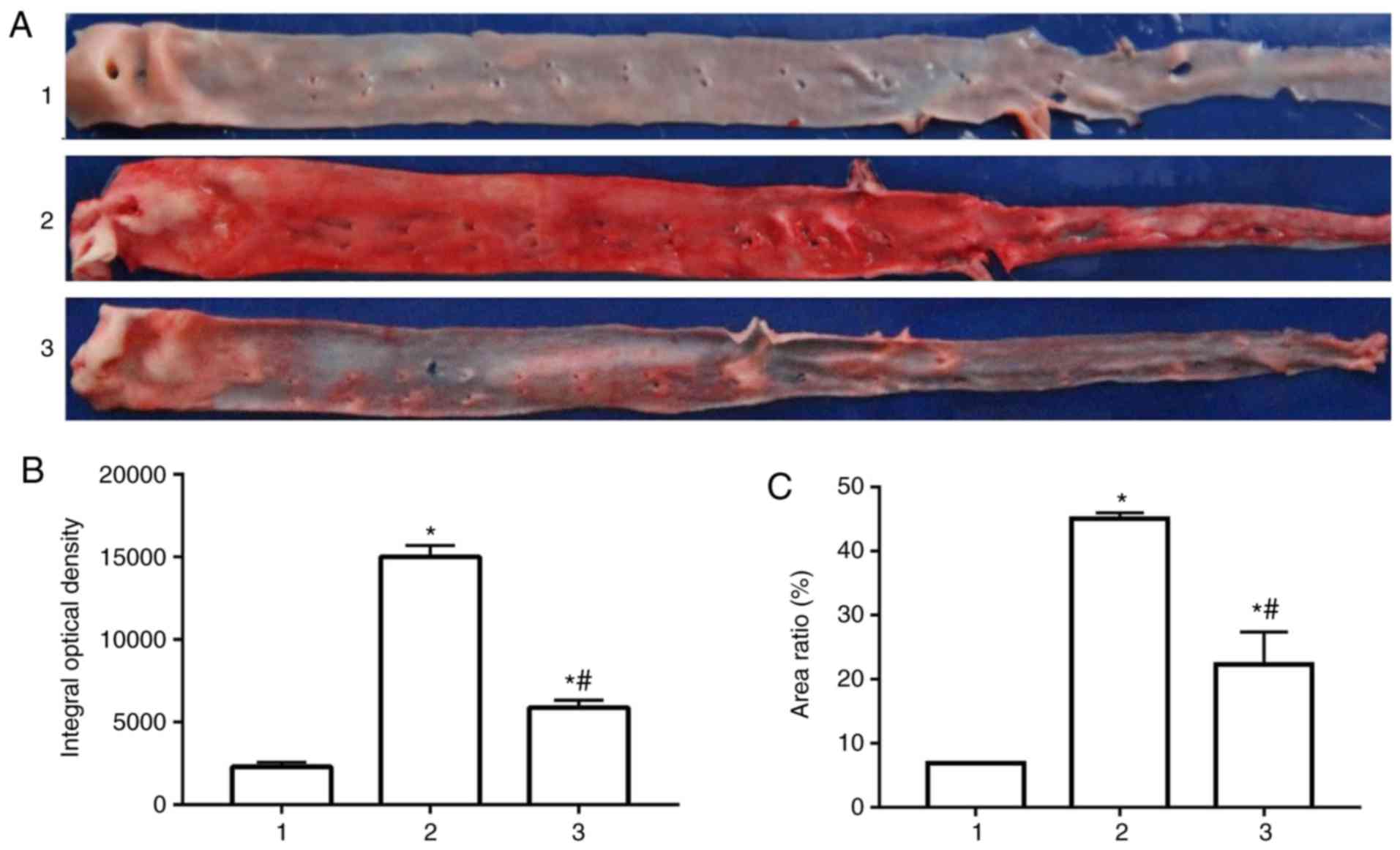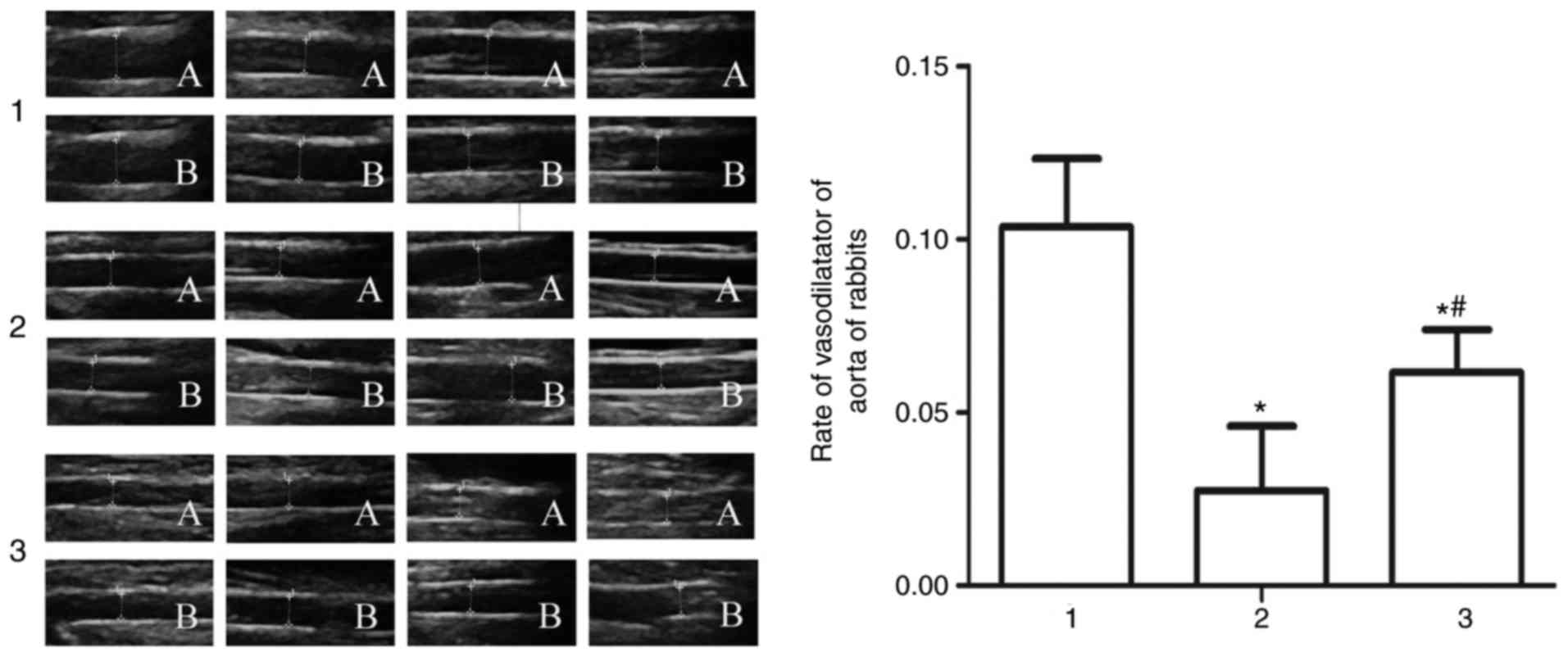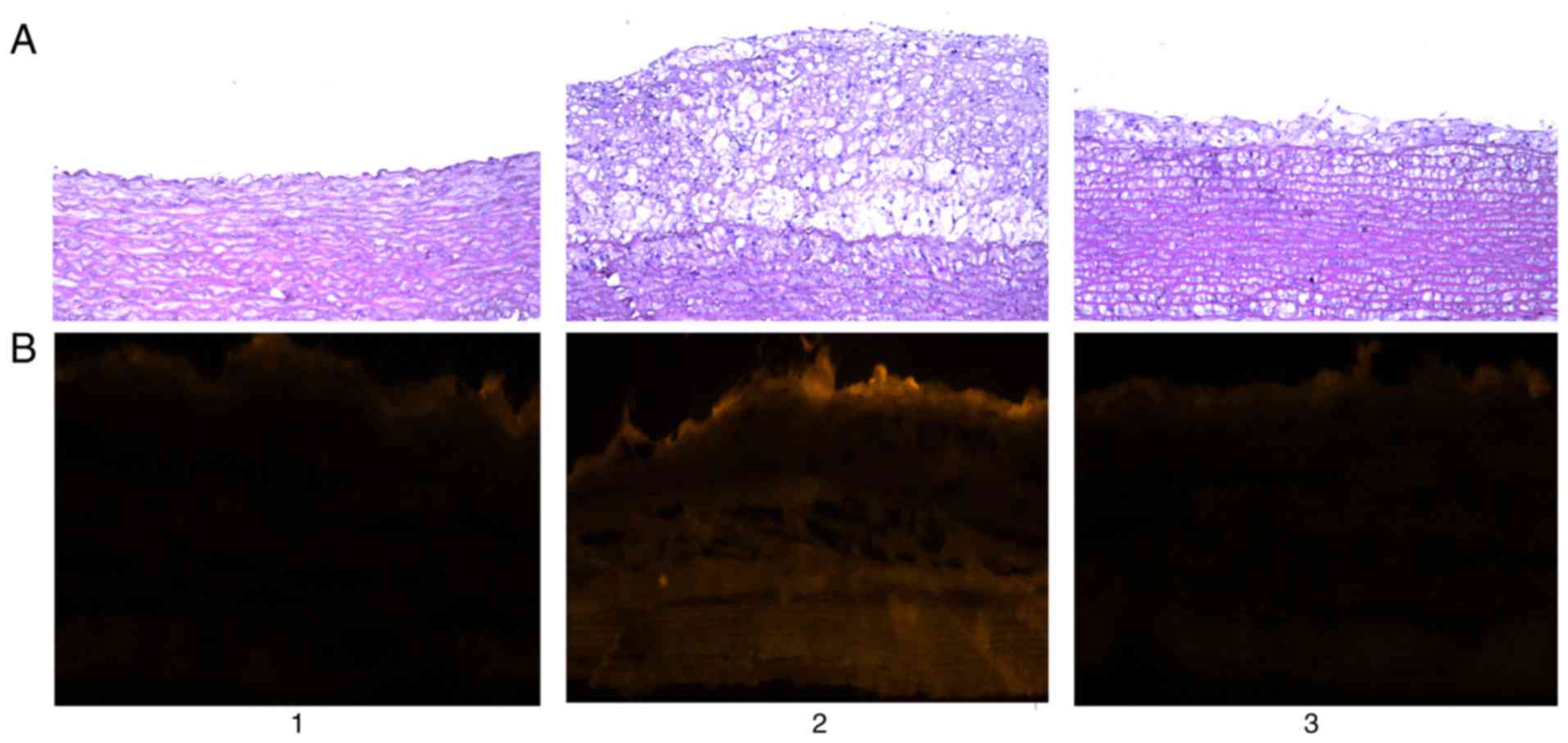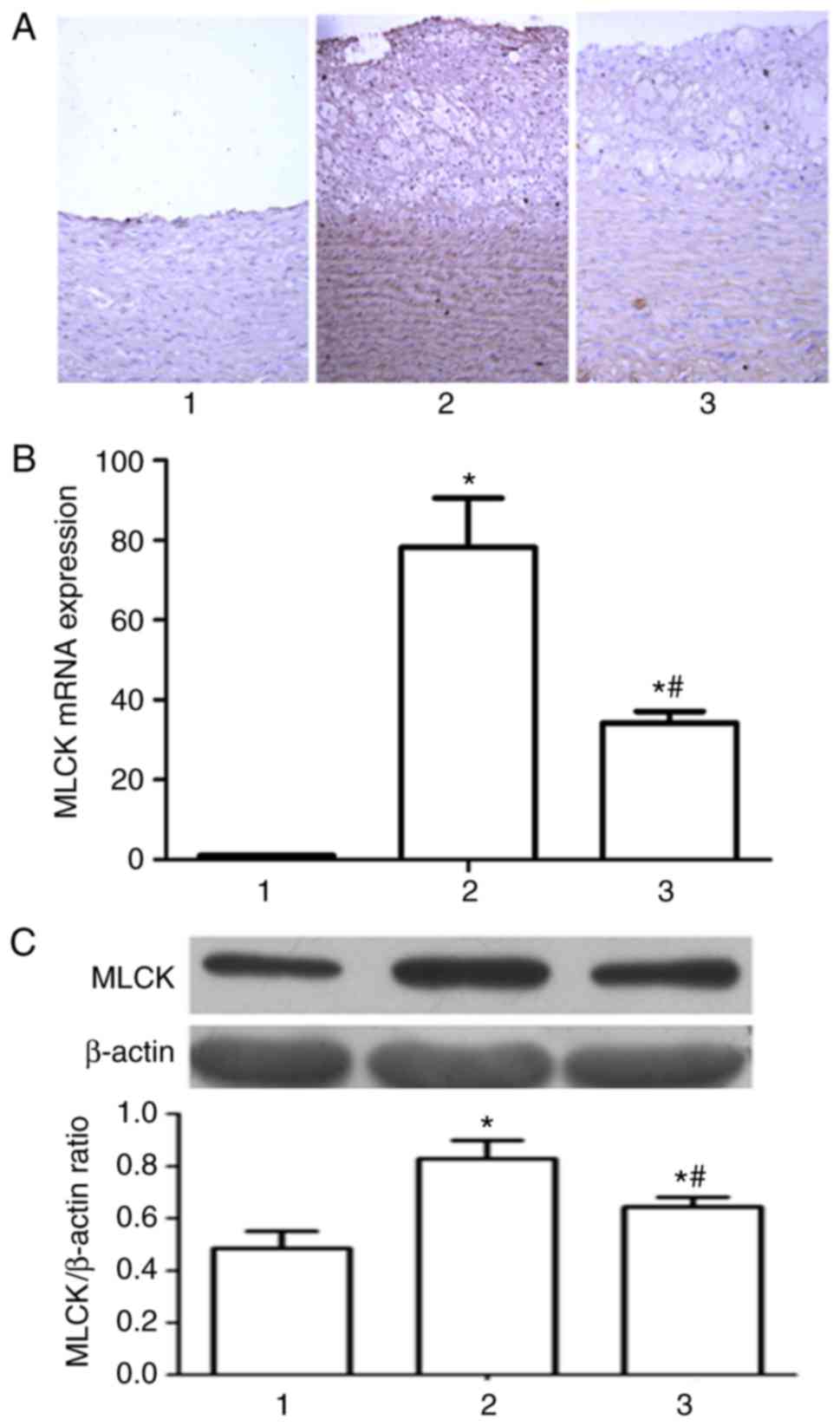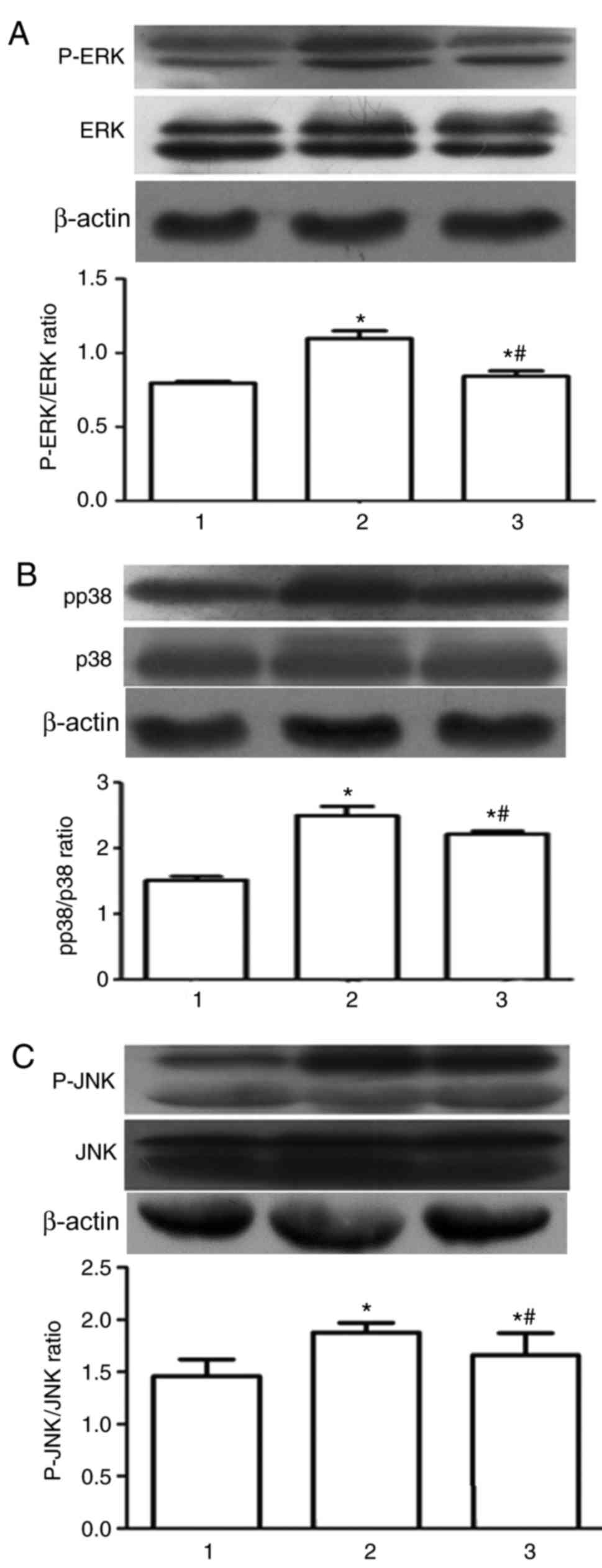|
1
|
Hansson GK: Inflammation, atherosclerosis,
and coronary artery disease. N Engl J Med. 352:1685–1695. 2005.
View Article : Google Scholar : PubMed/NCBI
|
|
2
|
Lusis AJ: Atherosclerosis. Nature.
407:233–241. 2000. View
Article : Google Scholar : PubMed/NCBI
|
|
3
|
Kronenberg F, Kronenberg MF, Kiechl S,
Trenkwalder E, Santer P, Oberhollenzer F, Egger G, Utermann G and
Willeit J: Role of lipoprotein(a) and apolipoprotein(a) phenotype
in atherogenesis. Circulation. 100:1154–1160. 1999. View Article : Google Scholar : PubMed/NCBI
|
|
4
|
Assmann G, Cullen P, Jossa F, Lewis B and
Mancini M: Coronary heart disease: Reducing the risk: The
scientific background to primary and secondary prevention of
coronary heart disease. A worldwide view. International Task force
for the Prevention of Coronary Heart disease. Arterioscl Thromb
Vasc Biol. 19:1819–1824. 1999. View Article : Google Scholar : PubMed/NCBI
|
|
5
|
Lusis AJ, Mar R and Pajukanta P: Genetics
of atherosclerosis. Annu Rev Genomics Hum Genet. 5:189–218. 2004.
View Article : Google Scholar : PubMed/NCBI
|
|
6
|
Williams IL, Wheatcroft SB, Shah AM and
Kearney MT: Obesity, atherosclerosis and the vascular endothelium:
Mechanisms of reduced nitric oxide bioavailability in obese humans.
Int J Obes Relat Metab Disord. 26:754–764. 2002. View Article : Google Scholar : PubMed/NCBI
|
|
7
|
Daiber A, Steven S, Weber A, Shuvaev VV,
Muzykantov VR, Laher I, Li H, Lamas S and Münzel T: Targeting
vascular (endothelial) dysfunction. Br J Pharmacol. 174:1591–1619.
2017. View Article : Google Scholar : PubMed/NCBI
|
|
8
|
Hamlat-Khennaf N, Neggazi S, Ayari H,
Feugier P, Bricca G, Aouichat-Bouguerra S and Beylot M:
Inflammation in the perivascular adipose tissue and
atherosclerosis. C R Biol. 340:156–163. 2017.(In French).
View Article : Google Scholar : PubMed/NCBI
|
|
9
|
Quiros M and Nusrat A: RhoGTPases,
actomyosin signaling and regulation of the epithelial apical
junctional complex. Semin Cell Dev Biol. 36:194–203. 2014.
View Article : Google Scholar : PubMed/NCBI
|
|
10
|
Petrache I, Birukov K, Zaiman AL, Crow MT,
Deng H, Wadgaonkar R, Romer LH and Garcia JG: Caspase-dependent
cleavage of myosin light chain kinase (MLCK) is involved in
TNF-alpha-mediated bovine pulmonary endothelial cell apoptosis.
FASEB J. 17:407–416. 2003. View Article : Google Scholar : PubMed/NCBI
|
|
11
|
Miao W, Wu X, Wang K, Wang W, Wang Y, Li
Z, Liu J, Li L and Peng L: Sodium butyrate promotes reassembly of
tight junctions in caco-2 monolayers involving inhibition of
MLCK/MLC2 pathway and phosphorylation of PKCβ2. Int J Mol Sci.
17:1696–1708. 2016. View Article : Google Scholar
|
|
12
|
Stull JT, Kamm KE and Vandenboom R: Myosin
light chain kinase and the role of myosin light chain
phosphorylation in skeletal muscle. Arch Biochem Biophys.
510:120–128. 2011. View Article : Google Scholar : PubMed/NCBI
|
|
13
|
Brasier AR: The nuclear
factor-kappaB-interleukin-6 signalling pathway mediating vascular
inflammation. Cardiovasc Res. 86:211–218. 2010. View Article : Google Scholar : PubMed/NCBI
|
|
14
|
Yokota T, Nishio H, Kubota Y and Mizoguchi
M: The inhibitory effect of glabridin from licorice extracts on
melanogenesis and inflammation. Pigment Cell Res. 11:355–361. 1998.
View Article : Google Scholar : PubMed/NCBI
|
|
15
|
Simmler C, Pauli GF and Chen SN:
Phytochemistry and biological properties of glabridin. Fitoterapia.
90:160–184. 2013. View Article : Google Scholar : PubMed/NCBI
|
|
16
|
Cui YM, Ao MZ, Li W and Yu LJ: Effect of
Glabridin from Glycyrrhiza glabra on Learning and Memory in Mice.
Planta Med. 74:377–380. 2008. View Article : Google Scholar : PubMed/NCBI
|
|
17
|
Hu ZP, Fang XL, Fang N, Wang XB, Qian HY,
Cao Z, Cheng Y, Wang BN and Wang Y: Melatonin ameliorates vascular
endothelial dysfunction, inflammation, and atherosclerosis by
suppressing the TLR4/NF-κB system in high-fat-fed rabbits. J Pineal
Res. 55:388–398. 2013.PubMed/NCBI
|
|
18
|
Zhang C, Zheng H, Yu Q, Yang P, Li Y,
Cheng F, Fan J and Liu E: A practical method for quantifying
atherosclerotic lesions in rabbits. J Comp Pathol. 142:122–128.
2010. View Article : Google Scholar : PubMed/NCBI
|
|
19
|
Wang H, Zhu HQ, Feng W, Zhou Q, Gui SY and
Yuan W: MicroRNA-1 prevents high-fat diet-induced endothelial
permeability in apoE knock-out mice. Mol Cell Biochem. 378:153–159.
2013. View Article : Google Scholar : PubMed/NCBI
|
|
20
|
Zhou B, Pan Y, Hu Z, Wang X, Han J, Zhou
Q, Zhai Z and Wang Y: All-trans-retinoic acid ameliorated high fat
diet-induced atherosclerosis in rabbits by inhibiting platelet
activation and inflammation. J Biomed Biotechnol. 2012:2596932012.
View Article : Google Scholar : PubMed/NCBI
|
|
21
|
Livak KJ and Schmittgen TD: Analysis of
relative gene expression data using real-time quantitative PCR and
the 2 (-Delta Delta C(T)) method. Methods. 25:402–408. 2001.
View Article : Google Scholar : PubMed/NCBI
|
|
22
|
Agil A, Navarro-Alarcón M, Ruiz R,
Abuhamadah S, El-Mir MY and Vázquez GF: Beneficial effects of
melatonin on obesity and lipid profile in young Zucker diabetic
fatty rats. J Pineal Res. 50:207–212. 2011.PubMed/NCBI
|
|
23
|
Liuzzo G: Atherosclerosis: An inflammatory
disease. Rays. 26:221–230. 2001.PubMed/NCBI
|
|
24
|
Fatkhullina AR, Peshkova IO and Koltsova
EK: The role of cytokines in the development of atherosclerosis.
Biochemistry (Mosc). 81:1358–1370. 2016. View Article : Google Scholar : PubMed/NCBI
|
|
25
|
Libby P: Inflammation in atherosclerosis.
Arterioscler Thromb Vasc Biol. 32:2045–2051. 2012. View Article : Google Scholar : PubMed/NCBI
|
|
26
|
Corre I, Paris F and Huot J: The p38
pathway, a major pleiotropic cascade that transduces stress and
metastatic signals in endothelial cells. Oncotarget. 8:55684–55714.
2017. View Article : Google Scholar : PubMed/NCBI
|
|
27
|
Yanni AE: The laboratory rabbit: An animal
model of atherosclerosis research. Lab Anim. 38:246–256. 2004.
View Article : Google Scholar : PubMed/NCBI
|
|
28
|
Bocan TM, Mueller SB, Mazur MJ, Uhlendorf
PD, Brown EQ and Kieft KA: The relationship between the degree of
dietary-induced hypercholesterolemia in the rabbit and
atherosclerotic lesion formation. Atherosclerosis. 102:9–22. 1993.
View Article : Google Scholar : PubMed/NCBI
|
|
29
|
Urbano RL, Furia C, Basehore S and Clyne
AM: Stiff substrates increase inflammation-induced endothelial
monolayer tension and permeability. Biophys J. 113:645–655. 2017.
View Article : Google Scholar : PubMed/NCBI
|
|
30
|
Bryk D, Olejarz W and Zapolska-Downar D:
Mitogen-activated protein kinases in atherosclerosis. Postepy Hig
Med Dosw (Online). 68:10–22. 2014.(In Polish). View Article : Google Scholar : PubMed/NCBI
|
|
31
|
Hao XZ and Fan HM: Identification of
miRNAs as atherosclerosis biomarkers and functional role of miR-126
in atherosclerosis progression through MAPK signalling pathway. Eur
Rev Med Pharmacol Sci. 21:2725–2733. 2017.PubMed/NCBI
|
|
32
|
Wagner EF and Nebreda AR: Signal
integration by JNK and p38 MAPK pathways in cancer development. Nat
Rev Cancer. 9:537–549. 2009. View
Article : Google Scholar : PubMed/NCBI
|
|
33
|
Harding A, Cortez-Toledo E, Magner NL,
Beegle JR, Coleal-Bergum DP, Hao D, Wang A, Nolta JA and Zhou P:
Highly efficient differentiation of endothelial cells from
pluripotent stem cells requires the MAPK and the PI3K pathways.
Stem Cells. 35:909–919. 2017. View Article : Google Scholar : PubMed/NCBI
|
|
34
|
Zuo L, Yang X, Lu M, Hu R, Zhu H, Zhang S,
Zhou Q, Chen F, Gui S and Wang Y: All-trans retinoic acid inhibits
human colorectal cancer cells RKO migration via downregulating
myosin light chain kinase expression through MAPK signaling
pathway. Nutr Cancer. 68:1225–1233. 2016. View Article : Google Scholar : PubMed/NCBI
|
|
35
|
Sellers JR and Adelstein RS: Regulation of
contractile activity. Enzymes. Tamanoi F: 18. 3rd. Academic press;
New York, NY: pp. pp381–418. 1987, View Article : Google Scholar
|
|
36
|
Tan JL, Ravid S and Spudich JA: Control of
nonmuscle myosins by phosphorylation. Annu Rev Biochem. 61:721–759.
1992. View Article : Google Scholar : PubMed/NCBI
|
|
37
|
Wang B, Yan Y, Zhou J, Zhou Q, Gui S and
Wang Y: A novel all-trans retinoid acid derivatives inhibits the
migration of breast cancer cell lines MDA-MB-231 via myosin light
chain kinase involving p38-MAPK pathway. Biomed Pharmacother.
67:357–362. 2013. View Article : Google Scholar : PubMed/NCBI
|
|
38
|
Ringvold HC and Khalil RA: Protein kinase
C as regulator of vascular smooth muscle function and potential
target in vascular disorders. Adv Pharmacol. 78:203–301. 2017.
View Article : Google Scholar : PubMed/NCBI
|
|
39
|
Yu T, Wang Y, Qian D, Sun X, Tang Y, Shen
X and Lin L: Advanced glycation end products impair Ca2+
mobilization and sensitization in colonic smooth muscle cells via
the CAMP/PKA pathway. Cell Physiol Biochem. 43:1571–1587. 2017.
View Article : Google Scholar : PubMed/NCBI
|















